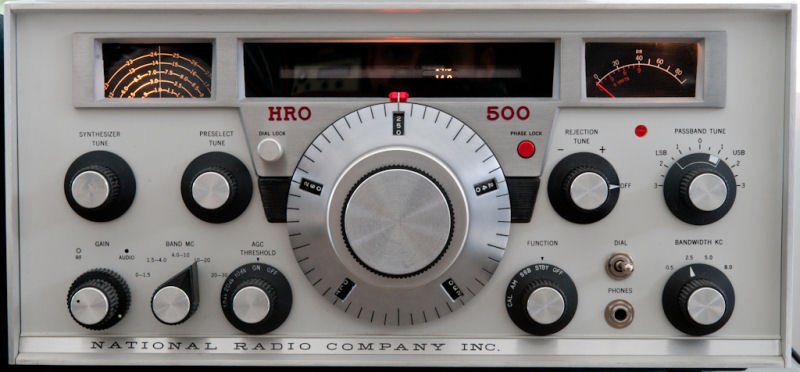Many thanks to SWLing Post contributor, Dan Robinson, who writes:
The number of times a shortwave classic becomes available in this condition over the course of decades, can be counted on two hands, let alone one in new unopened condition:
Thanks for the tip, Dan! I’ve never seen the HRO-500 in person, but it looks like a beautiful rig. I love the simple front panel and the classic HRO tuning knob.
I wonder what this HRO-500 will fetch!?!


I have one in great working order. It is a joy to operate and this one performs to specs.
I compare it to the SX-115 and Collins 390a and 754A4 sitting next to it. They are original and have not been “improved”. I will recap the 75A4 because of hum but it is down on my priority list. (If it is not broke, don’t fix it.)
The HRO 500 has the best visual appeal of the bunch and driving a high quality speaker is smooth and not tiring to listen to.
Thanks for reading.
73,
Tom
K9FLY
I used one on field day in 1972 with the high school radio club. My classmates belonged to parents with very deep pockets. The only way I could compete is make my own equipment which was all tubes from old TVs and radios. I had a National condenser in the tuning circuit of my homemade receiver.
I had one of these… I bought it from an estate for the asking price of $125 from an owner in southern NM . It was in very good condition and powered up but didn’t work (I believe the synthesizer function had expired). IIRC, most/all of the semiconductors were not only germanium, but socketed.
I knew it was well above my ability to repair, and I traded it to a collector somewhere in the upper midwest for a like new EF Johnson Valiant (which I still have). It worked fine (and it I could repair, should it need it).
Beautiful, heavy , and worthy of carrying the National name, they were an interesting mixture of old and new with both solid state devices and the PW dial.
The best solid state receiver.
I have an extremely fond memory of the HRO-500, never having dreamed of owning one.
I was at the NASWA/ANARC convention in Wakefield, MA in the early 70’s when Max Fuchs of National Radio entered the meeting room with a radio under his arm, approaching the table in front. Max then threw this radio about ten or twelve feet, hitting the top of the table, bouncing past it and onto the floor! He said: “This is the HRO-500. Don’t worry, it’s indestructible.” Everyone gasped when this radio (which would probably be at least $10K in today’s dollars when it was new) was flying and eventually came to a stop. Might have even been a few tears in the crowd.
I wonder if the electronics would have held up in the past 40+ years? Fortunately I have the ability to purchase something like this; unfortunately, living in a horrendous DX location valley for almost 40 years (where I don’t even get over-the-air TV). my DXing is confined to vacationing. Any thoughts as to whether the group thinks this is worth the $$$? Not exactly an airplane-travelling receiver…
How embarrassing if the receiver hadn’t worked.
The 500 used germanium transistors and those generally have had problems over time. That issue is compounded by the lack of new production of germanium transistors.
But people have written about resurrecting the 500, so they’ve found replacements. It’s a hefty receiver despite transistors. Hard to work on I gather, but in the same way working on any top end receiver is, no built on a single circuit board here.
Electrolytic capacitors may need replacing, though maybe it being a high end receiver, higher quality capacitors were used.
I’ve read that it’s still a decent receiver. I guess that surprises me, it’s pretty early in solid state development, just a few years before transistors didn’t do much beyond the broadcast band. A lot of transistorized SW receivers of the era were not very good.
It uses an analog synthesizer, lots of alignment if it is needed, but it’s likely clean output. The VFO is analog, and no frequency counter. Tuning to a new 500ZKHz segment my be finicky, you’re in essence tuning the oscillator until it locks, not setting dial which then locks the oscillator. The circuit is somewhat similar to the Wadley loop, which is why some think the Wadley loop is used in places it isn’t. But there is a similarity in moving to the next 500KHz step, as seen by the operator.
Other than the synthesizer, it’s a straightforward receiver, other factors determine it’s usefulness, but given the original price, one would hope it was a decent receiver.
We all drooled over it, but for most, we never even got close to one.
Michael
$2800 reserve. No bids so far. I used one of these several times. Great receiver.